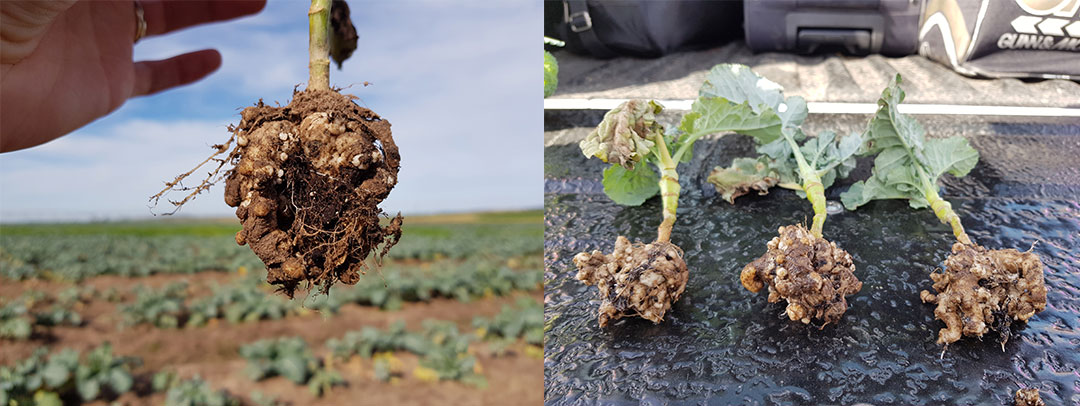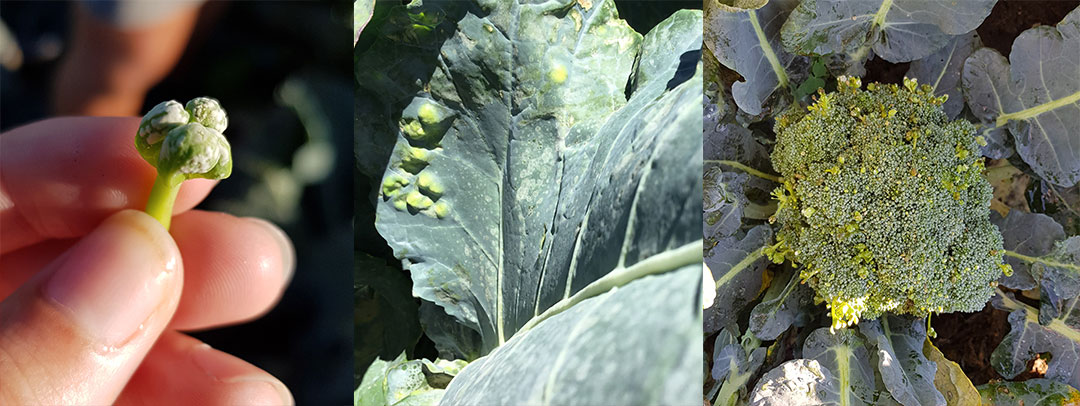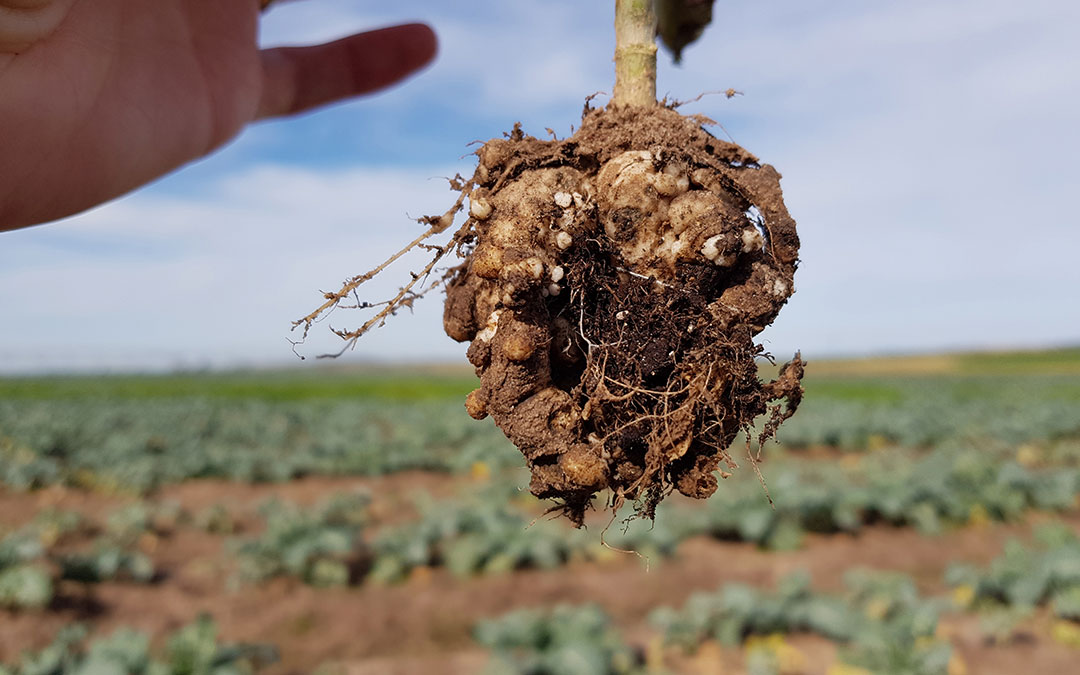Brassica crops are affected by many diseases, therefore it is important for growers to determine which diseases are prevalent in their growing area and season. They should use cultural practices and varieties that reduce the impact of key diseases. It is also important to know where the pathogen originates, how it is dispersed and infest the plant, and what environmental conditions favour its development in order to limit disease problems.
Alternaria

Alternaria brassicicola is a destructive, necrotrophic (fungal) plant parasite that results in significant damage to a wide range of host plants – including almost all Brassica (cabbage, broccoli, cauliflower, rape etc.) family members. It causes a disease known as blackspot/pin rot and the symptoms looks a lot like black rotting spots that occurs on broccoli heads. This plant pathogen first kills and then absorbs nutrients from the aboveground material of its infected host. It is spread right throughout the world, and the disease is considered to be of worldwide economic importance.
Clubroot

Clubroot is a very devastating disease affecting a wide host range, especially brassicas. It is caused by the soil borne pathogen Plasmodiophora brassicae, an obligate parasite (only able to live and multiply in living host cells) that exists as many races and specialized forms.
When young plants get infected, they will become stunted and they may eventually die. When the plants are pulled from the soil, the roots are swollen and they look distorted. Leaves of infected plants become yellow and may wilt, especially on warm days. This is due to the infected roots inability to absorb any water. In addition to this reduced water uptake, the clubbed tissue will be exposed to commonly found soft rotting bacteria because the pathogen inhibits the development of a protective outer layer on the roots.
Whiteblister

Whiteblister is caused by Albugo candida, a fungus of which 17 different races has already been identified and described up to now. Initial symptoms of the locally situated infection are usually limited to plant parts containing chlorophyll. The localized infection will appear as a “mildew” type growth on the underside of the leaves. As the symptoms progress, the “white blisters” start forming. With this systemic infection, extensive distortion, hypertrophy, hyperplasia and sterility of inflorescence (stagheads) can occur.
The use of resistant varieties offers good means of control but often the application of fungicide sprays may be needed. The use of disease free seed or adequate seed treatment is also important as several pathogens, such as black leg and black rot, can be introduced through infected seed. It is important to avoid such diseases being introduced into new areas. Regular field inspections along with an effective spray program is also essential in reducing disease infection, whilst good irrigation practices and correct planting time will also provide some measure of disease prevention.

